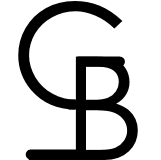Free Guitar Chord pdfs of Suspended (Sus) Chords

Are you are at the stage where you know the basic major, minor and 7th chords shapes? Learn suspended chords. These chords appear in many songs, but what are they? I’ll explain.
Guitar in Real Time: Level Two (2nd Edition) Get this book to learn all chord types shown on this page. This series covers chords, music reading and technique. Find FREE play-along backing tracks for the book on guitarinrealtime.com.
Visit this page for basic guitar chords. It has FREE PDF GUITAR CHORD SHEETS. Once you get to know the basic chords, come back here again for the suspended and Major 7th Chords.
A Little Theory
Play the 1st, 3rd and 5th tones of a major or minor scale and you are playing a Chord triads. A chord triad of a suspended chord has no 3rd tone. Instead, it has either a 2nd or a 4th.
Why is it called “suspended?”
The name suspended comes from the way that these chords were originally used in classical music. Hold a note from one chord into the next where that suspended note is either 2nd or 4th chord. That note will be either a 4th or a 2nd tone of the new chord creating tension.
Change the 2nd or 4th suspended tone to a 3rd to release the tension. Look at this example chord progression below to understand the concept.
Use sus chords like this
A |Esus4 E| A |
Here are the chord tones of the chords above:
A chord = A C E
Esus4 chord = E A B
E chord. = E. G# B
Notice that the note A is in both the Esus4 and the A chord. A is the suspended 4th tone of the Esus4. It’s held over from the A chord. That A tone creates tension in the Esus4 chord and wants to resolve down to G# of the E chord. This is the traditional way that “sus” chords are used.
Get to know sus chords. They are useful in modern music to break up long bars of the same major and minor chords and add movement to otherwise static chords. Download the free pdf sheet below.
FREE – SUSPENDED (SUS) CHORD SHEET IN OPEN POSITION
Free Guitar Chord pdfs of Major 7th Chords
Another chord type to learn after you’ve learned the basic major and minor chords, are Major 7th chords.
What’s the Difference Between a 7th and a Major 7th Chord?
Take a major scale and play the 1st, 3rd and 5th notes of that scale. This is what is called a major triad.
Now play the major triad along with the 7th note of the major scale. This is a Major 7th chord. It has a totally different sound and feel from dominant 7th chords, commonly just called 7th chords. Play dominant 7th chords by adding a flattened 7th tone to the 1st, 3rd, 5th tones of a major scale. The flat 7th note is NOT part of the major scale.
It you then play the 7th note along with the major triad, you are playing a Major 7th chord. This has a totally different sound and feel from what we usually just call a 7th chord. Play 1st, 3rd, 5th and a flat 7th together and you are playing a 7th chord. The 7th note is NOT in the major scale.
- FREE – MAJOR 7TH CHORDS IN OPEN POSITION – Major 7th chords playable in 1st position
- FREE – SIMPLE POWER CHORDS – By the classical definition of a chord, a power chord is not really a chord. A chord should have three or more notes. A power chord has only two, most often a 1st and a 5th played together. Play these tones together with an octave or unison tone of the 1st, but they are still not counted as being another chord tone. The pdf download uses mostly 1st and 5th intervals except for the occasional 6th interval. These are the old Chuck Berry style of power chord.
Get FREE pdfs of the major, minor, dominant 7th and minor 7th chords here: FREE-PDF BASIC GUITAR CHORD SHEETS
